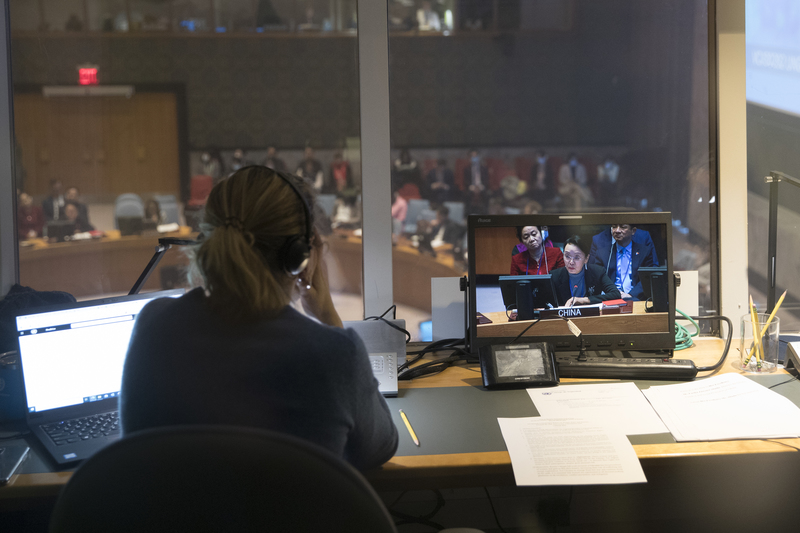The rapid ascent of short dramas on digital platforms has fundamentally reshaped global entertainment consumption. While their concise format and immediate gratification appeal broadly, truly maximizing their international footprint necessitates a robust commitment to accessibility. This goes beyond mere language translation; it involves crafting subtitles that cater to diverse audiences, including individuals with hearing impairments and non-native speakers. The strategic implementation of inclusive subtitling practices is therefore not merely an ethical consideration but a crucial driver for expanding short dramas' reach into burgeoning markets across Africa, Latin America, and beyond.
The Imperative of Inclusive Subtitling
For individuals with hearing impairments, subtitles are the primary conduit to narrative comprehension and emotional engagement. Standard subtitles, while providing dialogue, often fall short in conveying critical non-verbal audio cues that enrich the viewing experience for hearing audiences. This is where closed captions (CC) become indispensable. Closed captions incorporate descriptive text that contextualizes sounds, music, and speaker identification, offering a more complete and immersive experience.
Consider a scene in a short drama where a character receives devastating news. A standard subtitle might only display the spoken dialogue. However, a closed caption would provide additional sensory information, such as [somber music swells], [glass shatters softly], or [character sobs quietly]. These seemingly minor additions are vital for conveying mood, atmosphere, and critical plot points that are communicated through sound. Similarly, speaker identification, like [NARRATOR] or [ANNA, whispering], ensures clarity in scenes with multiple characters or off-screen dialogue, preventing confusion and enhancing narrative flow for viewers who cannot rely on vocal tone or position to distinguish speakers.
Beyond the hearing-impaired community, inclusive subtitling significantly benefits non-native speakers. For these viewers, subtitles provide a textual anchor that aids in language acquisition and comprehension, allowing them to follow fast-paced dialogue or complex cultural references that might otherwise be lost. Multilingual subtitle options, as offered by platforms like DramaBox, are therefore paramount. They empower viewers to choose their preferred language, fostering a more comfortable and engaging viewing environment. This flexibility is crucial in regions with high linguistic diversity or where English is not the primary language but is widely understood as a second or third language.
Techniques and Best Practices for Inclusive Translations
Developing effective inclusive subtitles demands a meticulous approach that balances linguistic accuracy with user accessibility. Several key techniques and best practices contribute to this balance:
Timing and synchronization: Subtitles must appear on screen precisely when the corresponding dialogue or sound occurs and remain visible long enough for viewers to read comfortably without missing subsequent information. For fast-paced short dramas, this often means concise phrasing to fit within short display durations. Overlapping subtitles or text that flashes too quickly can lead to frustration and hinder comprehension.
Readability: This involves choosing clear, legible fonts, appropriate font sizes, and contrasting colors against the video background. Many platforms offer user-customizable subtitle display settings, but content creators should still ensure their base subtitle files are optimized for clarity. Position of subtitles also matters; usually at the bottom center of the screen, but adjusted if text conflicts with on-screen graphics.
Descriptive text in closed captions: The language should be concise yet informative. Instead of "music," specify [upbeat jazz music] or [tense orchestral score]. For sound effects, differentiate between [door creaks] and [door slams shut], as these convey different narrative meanings. It's about providing enough detail to paint an auditory picture without overwhelming the viewer with text.
Cultural adaptation in translation: When translating for multilingual options, cultural relevance is as important as linguistic accuracy. Idioms, slang, and specific cultural references should be translated in a way that resonates with the target audience without losing the original meaning or emotional intent. This might involve transcreation—recreating the meaning and impact rather than a literal word-for-word translation. Maintaining the emotional tone and character voice through translation is vital to retain the short drama's original appeal.
Expanding Reach: Short Dramas in Emerging Markets
The commitment to accessible subtitling directly impacts a short drama's potential for global market penetration, particularly in high-growth regions like Africa and Latin America. These markets represent vast untapped audiences with a strong appetite for digital content.
In many African countries, linguistic diversity is immense, with numerous local languages spoken alongside colonial languages like English, French, and Portuguese. Providing content with multilingual subtitles in both widely understood and local languages significantly lowers the barrier to entry for viewers, making short dramas immediately accessible to a broader demographic. This inclusive approach fosters a sense of cultural appreciation and relevance, which can drive higher engagement and foster local fan bases.
Similarly, Latin America, while predominantly Spanish and Portuguese speaking, benefits immensely from high-quality, inclusive subtitles. Even within these languages, regional dialects and cultural nuances exist. Furthermore, in countries with significant indigenous populations, providing subtitles in additional languages where feasible can further deepen market penetration and truly embody global inclusivity. Accessible subtitles ensure that short dramas, regardless of their origin, can transcend linguistic boundaries and connect with viewers on an emotional level. This ability to deliver compelling narratives across diverse linguistic and sensory needs is what empowers platforms to capture new audiences and monetize content effectively in these rapidly expanding digital entertainment landscapes.
Tools and Best Practices for Subtitle Creation
Creating high-quality, accessible subtitles requires dedicated tools and adherence to established best practices.
Subtitle Edit is a powerful, open-source tool widely favored for its comprehensive features. It allows for precise timing adjustments, waveform visualization (to match audio cues), spell-checking, translation assistance, and conversion between various subtitle formats (like SRT, ASS, VTT). Its ability to display the audio waveform is particularly useful for adding accurate closed caption descriptions, as users can visually identify sound events.
Other professional tools and services also offer advanced features like automatic speech recognition (ASR) for initial transcription (though human review is always essential for accuracy), machine translation (MT) for first-pass translations, and robust quality control workflows. However, regardless of the tool, the human element—skilled subtitlers and translators—remains critical for ensuring accuracy, cultural appropriateness, and emotional fidelity.
Best practices for creators and platforms looking to leverage subtitles for inclusion include:
Prioritize CC from the outset: Don't treat closed captions as an afterthought. Integrate their creation into the primary post-production workflow.
Invest in professional subtitlers: While automated tools can assist, human expertise is essential for nuanced translation, accurate timing, and culturally sensitive descriptions.
Encourage community feedback: For niche languages or specific cultural contexts, engaging with local communities can help refine subtitle quality and address any inadvertent inaccuracies.
Utilize platform features: Leverage the subtitle options provided by platforms like DramaBox, which often support multiple tracks for different languages and closed captions.
Standardize formatting: Maintain consistent formatting for descriptive text (e.g., always using brackets [] for sound descriptions) to enhance readability for users who rely on captions.
In conclusion, accessible subtitling is no longer a peripheral concern but a central pillar for the global growth of short dramas. By embracing techniques like closed captions with descriptive text and offering comprehensive multilingual options, content creators and platforms can significantly broaden their audience base, ensuring that the compelling narratives of short dramas are universally accessible and resonate deeply with viewers, irrespective of their language or hearing ability. This commitment to inclusivity is what will truly unlock the full potential of the short drama phenomenon on the world stage











